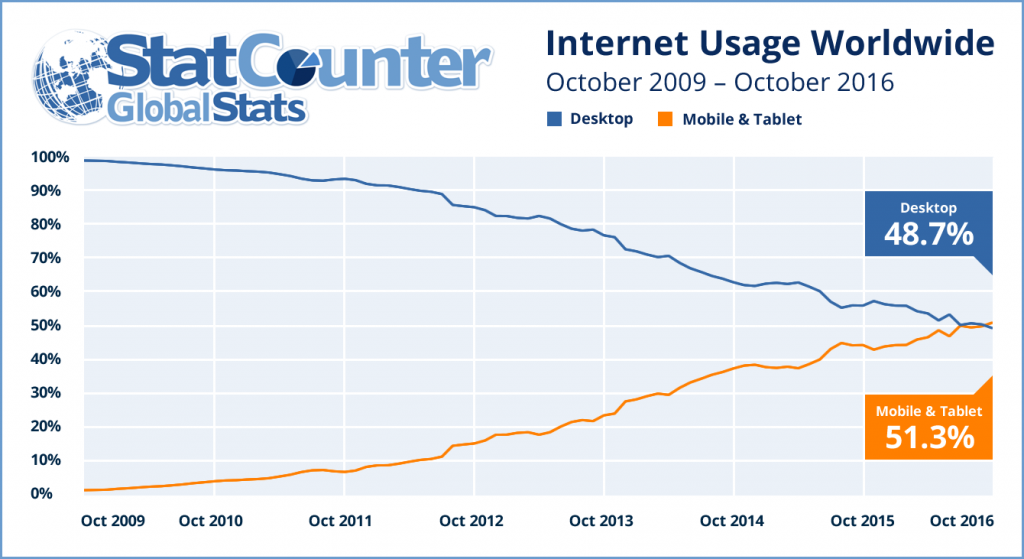3 Bold Predictions for Mobile Giving In 2017
Mobile giving has experienced a dramatic rise over the past few years. Starting with the Red Cross’ text-to-give campaign after Hurricane Katrina in 2005 through #GivingTuesday 2016, the way people interact with and give to charitable causes has shifted considerably. While some fundraising methods remain tried-and-true (direct mail, fundraising events), the ways in which people donate have evolved past traditional models.
Mobile Giving Overtakes Cash and Checks
Charitable donations are, at their core, a way people move money. While they aren’t a tangible, commercial expense, they are still a monetary transaction. While older generations still cling to cash and their checkbooks because that’s how they have always paid for things, organizations must look to younger donors to sustain themselves and grow into the future.
Younger donors (Generation X down to Millennials) conduct more of their business online, and the majority of that is via mobile. A study by the global statistics firm StatCounter showed that as of October 2016 mobile and tablet internet usage exceeded desktop for the first time in history.
Whether it’s calling an Uber, ordering a Starbucks, or doing their banking while on-the-go, younger generations are using their smartphones for the majority of their financial transactions. The same holds true for charitable donations.
A 2016 study by fundraising research firm Dunham+Company finds that the use of mobile devices by donors to charity websites increased by 80 percent from 2013 to 2015.
Plus, so many mobile transactions deeply integrate with social media as part and parcel of the experience. People who spend great amounts of time on Facebook, Twitter, Instagram, Snapchat, and other social networking platforms can easily and immediately interact with businesses with whom they have spent (or are deciding where to spend) their money. There’s no Chat function on a check.
Whether it’s through a dedicated mobile app or a mobile-responsive donation page on your website, mobile giving will exceed traditional cash and check donations in 2017.
One-Stop Shopping Giving
People are social animals: we tend to flock to where others already are. A case in point is the ubiquity of Facebook, with over 1.66 billion people using the mobile app for private messaging, setting up events, gathering news, and more.
Beyond going where our friends are, we expect to accomplish tasks quickly and efficiently while being provided choices. When we shop on Amazon we can purchase from a wide variety of sellers based on price, availability, and personal preference. We can even order meals delivered through GrubHub and OrderUp from a variety of chain and independent restaurants.
What do these experiences have in common? They use an app to aggregate goods and services from a variety of providers, enabling consumers to choose from among all of them.
It’s analogous to going to a shopping mall: if you need a new belt, some candy for your sweetheart, the newest basketball video game, and maybe feel like getting a bite to eat or catching a movie, you know you can go to a mall and accomplish all of these things in one place. Retailers set up shops in malls because they know there will be foot traffic there and they’re likely to get the attention of shoppers who are already in the mood to buy.
Charitable giving will begin to work the same way. When people want to make gifts to a number of organizations using their smartphones, they usually find that they must download a separate app for each cause they want to support. They have to go to the app store, download the app, create an account, and put in their billing information before they can even begin to donate. This delay introduces friction into the process, lessens the feeling of generosity, and leads to abandonment.
Donors will inevitably seek out an easier, more efficient way to give, and will flock to universal mobile giving apps where they can find any and every organization they’d like to support. While custom-developed, stand-alone apps have their place, when it comes to giving, people will adopt these one-stop shops.
Text-To-Give Gives Way
Many people associate mobile giving with text-to-give. While it’s true that text-to-give isn’t likely to go away anytime in the near future, 2017 will see a marked decline in usage of this platform. While text-to-give is a quick solution for fundraising, there are clear limitations for both organizations and donors that make it less effective in the long run.
Features and capabilities depend on the provider, but there are a few main limitations common to nearly every text-to-donate experience:
- Donors must remember a number and SMS code
- Donations are actually made via a mobile-optimized web form that must be filled out
- Givers do not have access to their donation histories
While text-to-give may be convenient for churches, places of worship, and nonprofits, it is usually a cumbersome process for donors and does not provide the features they need and expect. In other words, it’s not donor-centric giving. Additionally, mobile giving apps have also been demonstrated to produce larger and more repeat donations.
A 2015 study by nonprofit news outlet npENGAGE found that mobile donations to nonprofits increased by 45 percent from 2014 to 2015. Mobile apps cultivate more durable relationships between donors and nonprofits — the kind that produce larger gifts and repeat giving. These apps let users access their giving history and information, make donations, and link to others via contact lists and social media integration.
The annoyance of filling out online forms with logins and passwords or having to remember a number and code in order to make donations is becoming too much for donors to bear. Why remember a code or fill out a form when they can just search for the organization of their choice (or select it from their saved favorites) and make their gift in a few seconds?
As we move toward an increasingly app-based digital world, mobile apps will overtake text-to-give as the primary mobile giving option.
In Summary
- Whether it’s calling an Uber, ordering a Starbucks, or doing their banking, younger people conduct the majority of their transactions via mobile devices. Mobile giving will exceed traditional cash and check donations in 2017.
- Charitable giving will increasingly emulate the shopping mall experience, as people will adopt universal mobile giving apps where they can find all the organizations they want to support.
- Filling out web-based forms (even when mobile optimized) and remembering text-to-give numbers and codes will fall out of favor in lieu of the smooth, engaging mobile giving app experience.




